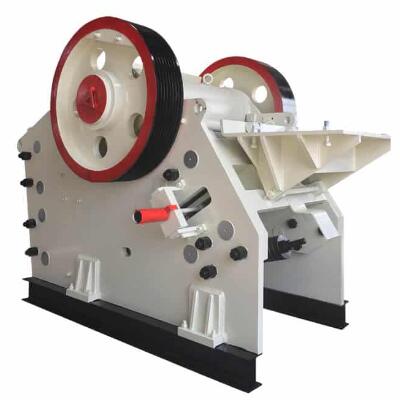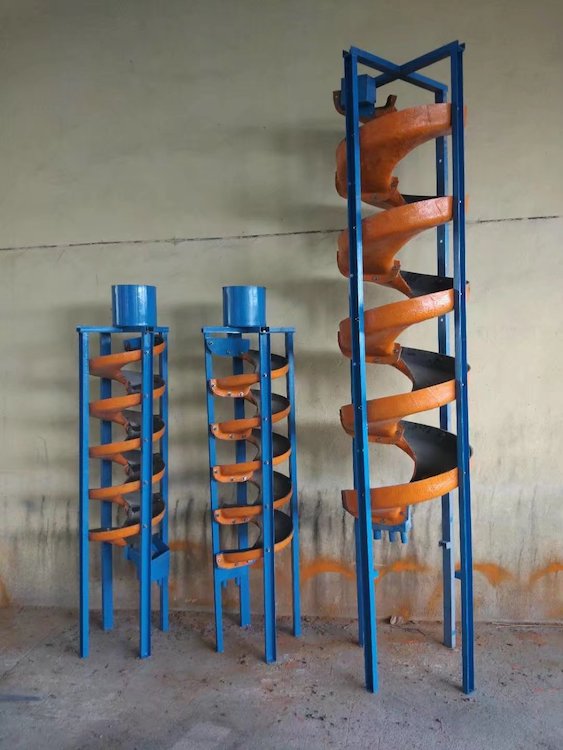The beneficiation process of quartz sand is mainly impurity removal and purification. To remove a small or slight amount of impurities in quartz sand and obtain a highly difficult separation technology of refined quartz sand or high-purity quartz sand.
The quartz sand process mainly includes quartz sand impurity analysis and impurity removal process, quartz sand purification process, etc.
Process And Equipment for Impurity Analysis And Removal of Quartz Sand
The impurity analysis process of quartz sand and quartz sandstone refers to the process of crushing, grinding, and grading to grind the natural quartz sandstone ore and make the impurities and minerals reach the monomer dissociation state, and then obtain the raw quartz sand meeting the particle size requirements through the grading operation, so as to prepare for the subsequent quartz sand impurity removal operation.
Specific Process Flow
The jaw crusher is used to crush the natural quartz sandstone ore into small pieces, and then the grinding equipment is used for wet grinding to grind the small pieces of quartz ore into quartz sand with finer particle size. The wet grinding process can not only eliminate the dust generated in the grinding process, but also make the quartz particles rub against each other, and promote the separation of impurities attached to the quartz surface (such as iron oxides and hydroxides) from the quartz particles. Then, the grinding products enter the classification operation. The quartz sand meeting the particle size requirements can be used as the raw quartz sand for the next step of quartz sand impurity removal, and the coarse particles will be returned to the grinding equipment for regrinding.
Required Equipment
- Jaw crusher
- Rod mill
- Hydraulic classifier
- Spiral classifier
 |
 |
Quartz Sand Purification Process and Equipment
The impurity removal process of quartz sand is to remove the mineral impurities in quartz sand by scrubbing and desliming, magnetic separation, chute gravity separation, flotation, pickling, or several joint operations, so as to obtain high-purity quartz sand with particle size and impurity content meeting the requirements.
Scrubbing desliming method
With the help of the mechanical force of the scrubbing machine and the grinding and stripping force between sand particles, the thin-film iron, bonding, and muddy impurity mineral deposits on the surface of quartz sand are removed, and the mineral deposit aggregates that have not been formed into monomers are further crushed, and then the role of further purifying silica sand is achieved through classification operation.
Magnetic separation
Magnetic separation is one of the effective methods to remove iron impurities in raw materials. Because the minerals such as hematite, limonite, and biotite contained in the raw materials have weak magnetism, the wet high-intensity magnetic separator is used with a magnetic field strength of 8 × It can be selected when it is more than 105a / M (ampere / M); For strong magnetic minerals containing impurities mainly magnetite, weak magnetic separator or medium magnetic separator is used for separation. In order to further remove a small amount of other weakly magnetic minerals (such as amphibole, pyroxene, and the intergrowth of magnetic minerals and quartz), a high gradient magnetic separator with a magnetic field strength greater than 12000 Gauss can be used for secondary magnetic separation.
Spiral chute gravity separation
When the raw material contains a small amount of heavy mineral impurities (such as zircon), because it is not magnetic and its specific gravity is greater than quartz, spiral chute gravity separation can be used to effectively remove such heavy mineral impurities. When the raw material mortar rotates and slides along the spiral chute surface, various minerals will be separated under the dual action of gravity and centrifugal force according to their specific gravity. The greater the difference of mineral-specific gravity, the higher the degree of separation. It is worth noting that mineral morphology also has a certain impact on the separation of spiral chute, and flake minerals are easier to separate from granular minerals. Therefore, when using the spiral chute to sort the raw quartz mortar, the sorted quartz mortar can be divided into three parts: granular heavy mineral area, granular quartz sand area, flake mineral, and light mineral area. In this way, while using the spiral chute to remove the heavy minerals in quartz sand, some flake mica minerals can also be removed.
Flotation method
If there are many kinds of mica minerals in raw materials, it is impossible to completely remove impurities only by using spiral chute. In addition, if the raw material also contains a certain amount of feldspar minerals with a specific gravity similar to quartz, these impurity minerals can be removed by the flotation process. At the same time, when quartz minerals and gangue minerals do not reach a certain degree of monomer dissociation, the grinding fineness needs to be increased.
Specific flow of flotation operation
Mica minerals and feldspar minerals in quartz sand were removed by a three-stage flotation process. Primary flotation is to float iron-bearing argillaceous matter from slurry by using a corresponding reagent system in a neutral or weak acid environment; Secondary flotation is to float mica minerals and the conjoined body of mica and quartz from the slurry by using the corresponding reagent system in the neutral or weak acid environment; Tertiary flotation is to float feldspar minerals and the conjoined body of feldspar and quartz from the slurry by using the corresponding reagent system in a neutral or weak acid environment.
Pickling Method
If the color of finished sand or product sand after impurity removal and sorting is red and the content of iron and titanium is high, which does not meet the product quality requirements, acid washing method can be adopted, first washing with water to remove powder and impurities, then pickling, soaking and washing with water, and finally drying or drying.
